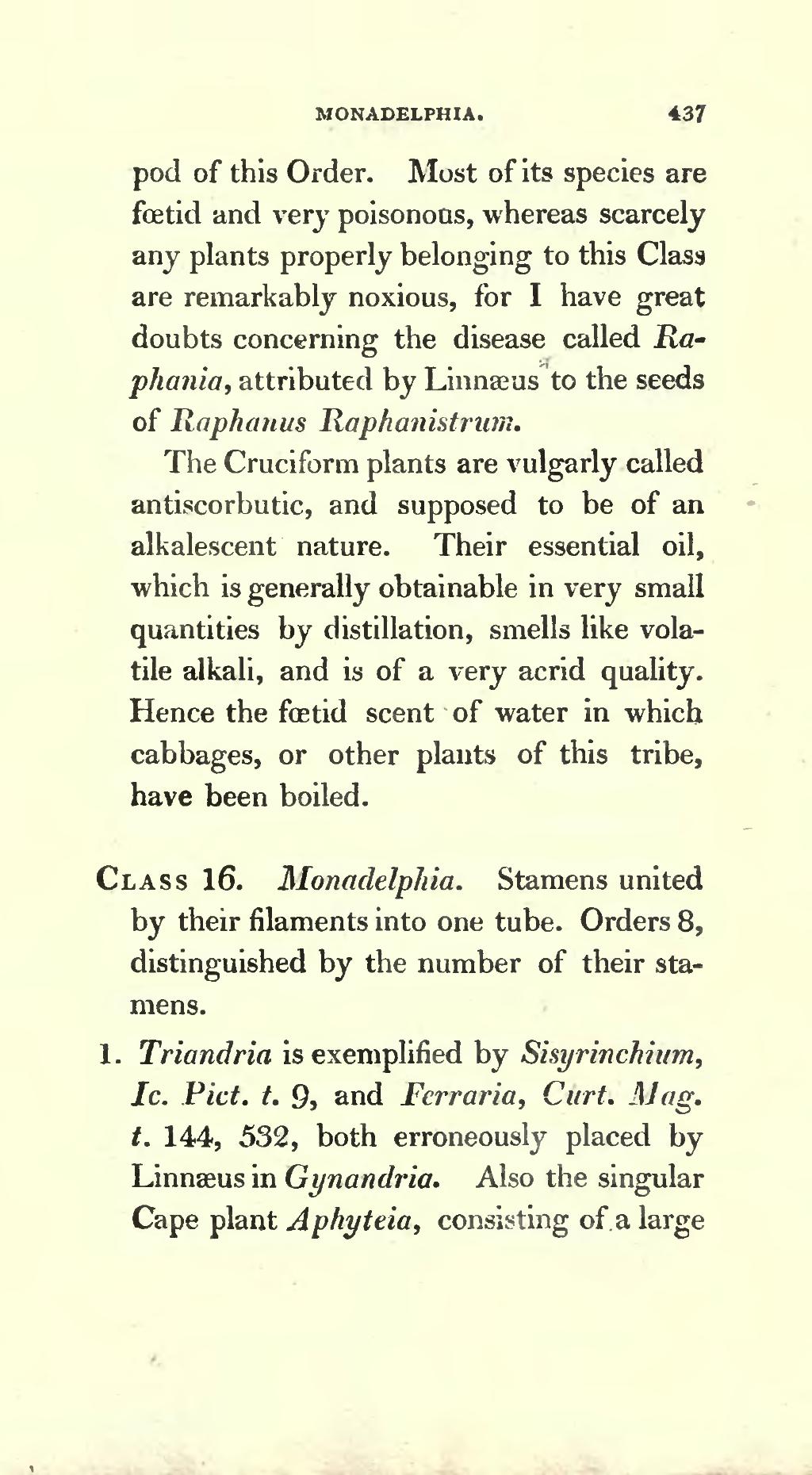pod of this Order. Most of its species are fœtid and very poisonous, whereas scarcely any plants properly belonging to this Class are remarkably noxious, for I have great doubts concerning the disease called Raphania, attributed by Linnæus to the seeds of Raphanus Raphanistrum.
The Cruciform plants are vulgarly called antiscorbutic, and supposed to be of an alkalescent nature. Their essential oil, which is generally obtainable in very small quantities by distillation, smells like volatile alkali, and is of a very acrid quality. Hence the fœtid scent of water in which cabbages, or other plants of this tribe, have been boiled.
Class 16. Monadelphia. Stamens united by their filaments into one tube. Orders 8, distinguished by the number of their stamens.
1. Triandria is exemplified by Sisyrinchium, Ic. Pict. t. 9, and Ferraria, Curt. Mag. t. 144, 532, both erroneously placed by Linnæus in Gynandria. Also the singular Cape plant Aphyteia, consisting of a large
